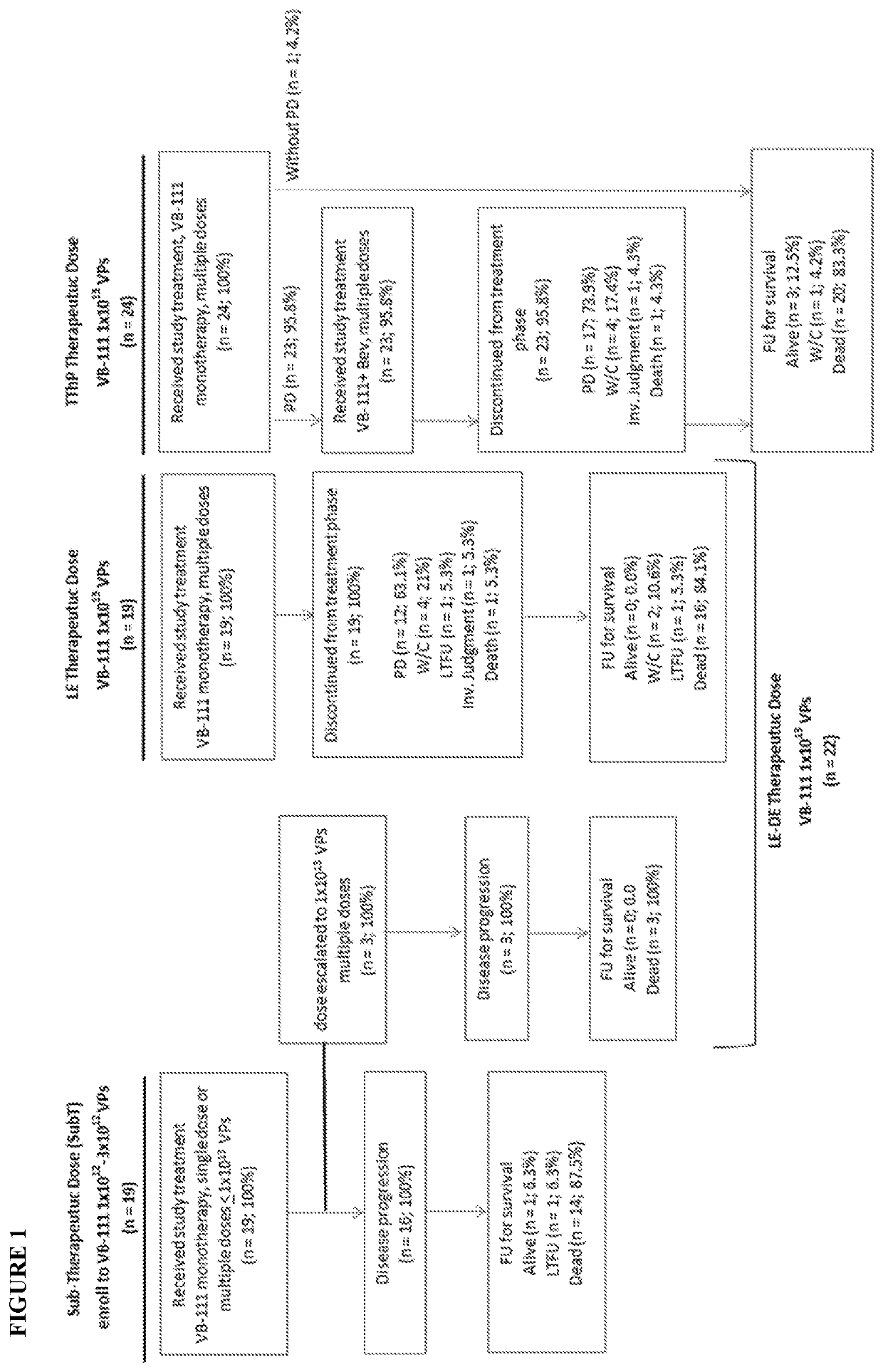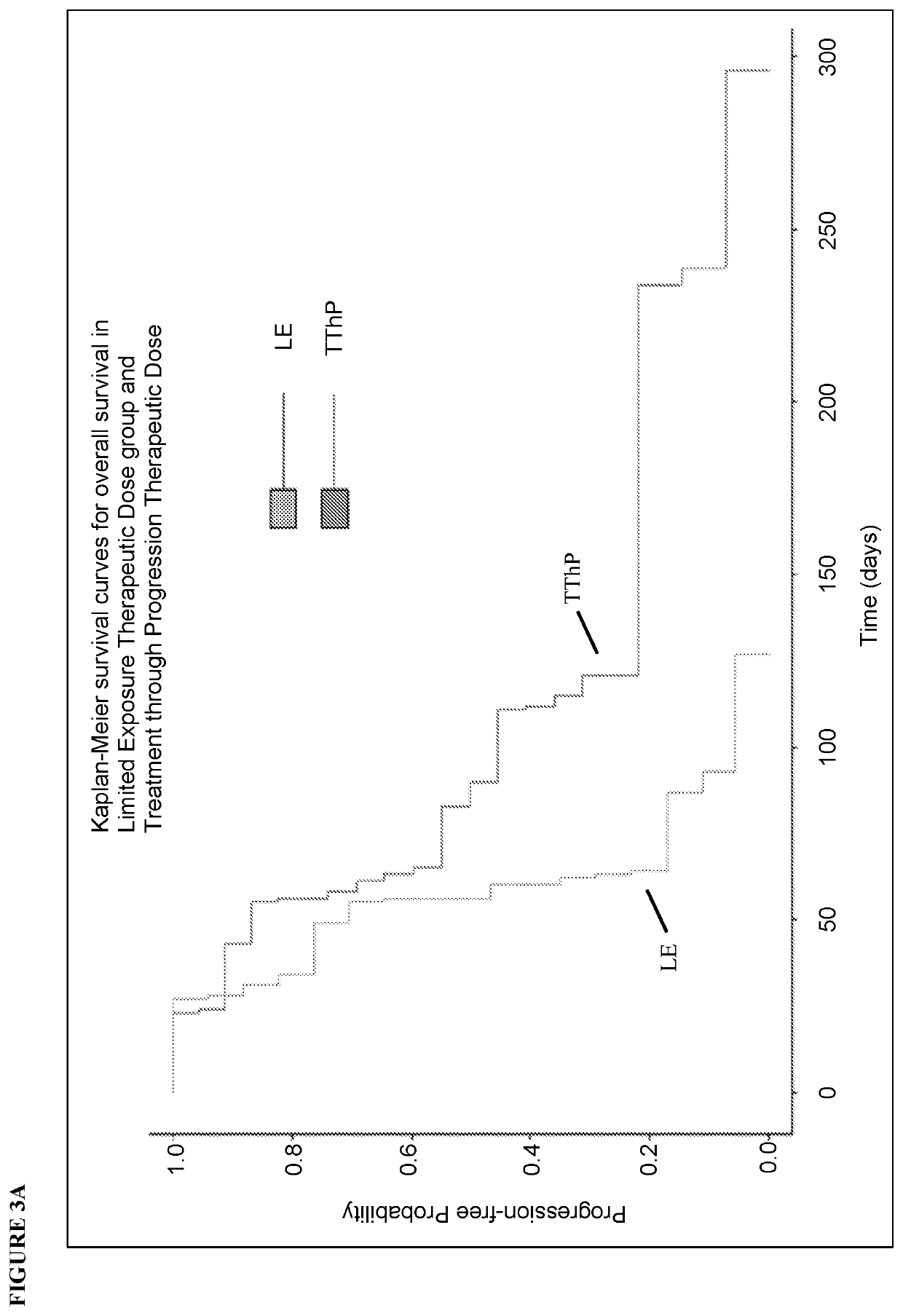Diagnostic methods for Anti-angiogenic agent therapy
a diagnostic method and antiangiogenic agent technology, applied in the direction of dsdna viruses, peptide/protein ingredients, genetic material ingredients, etc., can solve the problems of limiting the success of gene therapy, the duration of expression, and the success of targeting, so as to reduce the effect of angiogenesis
- Summary
- Abstract
- Description
- Claims
- Application Information
AI Technical Summary
Benefits of technology
Problems solved by technology
Method used
Image
Examples
example 1
Construction and Cloning of the Viral Vector
[0333]The vector was constructed using a backbone containing most of the genome of adenovirus type 5, as well as partial homology to an adaptor plasmid, which enables recombination.
[0334]The E1 early transcriptional unit was deleted from the backbone plasmid, and further modified by deleting the pWE25 and the Amp resistance selection marker site.
[0335]The adaptor plasmid contains sequences of the Ad5, CMV promoter, MCS, and SV40 polyA. The adaptor plasmid was modified to delete the CMV promoter, and the PPE-1 promoter and Fas-c fragment were inserted by restriction digestion. The modified PPE-1 promoter (PPE-1-3X, SEQ ID NO: 18) and the Fas-chimera transgene (Fas-c, SEQ ID NO: 9) were utilized for construction of the adenoviral vector. The PPE-1-(3X)-Fas-c element (2115 bp) was constructed from the PPE-1-(3X)-luc element. This element contains the 1.4 kb of the murine preproendothelin PPE-1-(3X) promoter, the Luciferase gene, the SV40 poly...
example 2
[0338]Phase 2 Study of Gene Therapy with VB-111 in Recurrent Glioblastoma with Dual Mechanism of Angiogenic Endothelial-Specific Death Receptor and Antitumor-Specific Immune Induction
[0339]OBJECTIVES: The objectives of this Phase 1 / 2 study were to evaluate the safety, tolerability, and efficacy of single and multiple doses of VB-111 (1×1012, 3×1012, and 1×1013 viral particles) in patients with recurrent GBM (rGBM), the distribution of VB-111, and the level of antibodies to the adenovirus vector. The study was also extended to evaluate the safety, tolerability, and efficacy of combination treatment with multiple doses of VB-111 (3×1012 or 1×1013 VP) together with bevacizumab in patients with rGBM. Overall survival (OS) was the primary efficacy endpoint.
Methods
[0340]Study Design: This study was a prospective, open-label, dose-escalating, Phase 1 / 2 study of VB-111 conducted at 3 centers in the US and 1 center in Israel (University of Texas Health Science Center, San Antonio, Tex.; Dana...
example 3
Ad5-PPE-1-3X-Fas-c Therapy Induces Anti-Tumoral Immunotherapeutic Responses
[0405]Background: Ad5-PPE-1-3X-Fas-c has shown a favorable toxicity profile and efficacy in phase 2 clinical studies for several cancer indications, including nearly doubling of overall survival (OS) in rGBM when added to bevacizumab. As shown in Example 2, an increased OS is more prominent in subjects experiencing febrile reaction to Ad5-PPE-1-3X-Fas-c. The present example discloses methods of treating a tumor in a subject who is capable of exhibiting a change in at least one plasma biomarker or cell surface biomarker after administration of at least one priming dose of Ad5-PPE-1-3X-Fas-c, as well as methods of identifying a responder to Fas-chimera gene therapy.
[0406]Methods: (i) Serum from the rGBM patients at baseline and 6 hours post Ad5-PPE-1-3X-Fas-c infusion was subjected to cytokine profiling using a luminex based array. (ii) Pathological specimens from Ad5-PPE-1-3X-Fas-c treated and control platinum...
PUM
| Property | Measurement | Unit |
|---|---|---|
| body temperature | aaaaa | aaaaa |
| temperatures | aaaaa | aaaaa |
| time | aaaaa | aaaaa |
Abstract
Description
Claims
Application Information
 Login to View More
Login to View More - R&D
- Intellectual Property
- Life Sciences
- Materials
- Tech Scout
- Unparalleled Data Quality
- Higher Quality Content
- 60% Fewer Hallucinations
Browse by: Latest US Patents, China's latest patents, Technical Efficacy Thesaurus, Application Domain, Technology Topic, Popular Technical Reports.
© 2025 PatSnap. All rights reserved.Legal|Privacy policy|Modern Slavery Act Transparency Statement|Sitemap|About US| Contact US: help@patsnap.com



